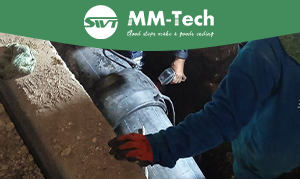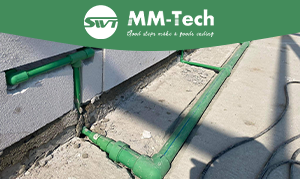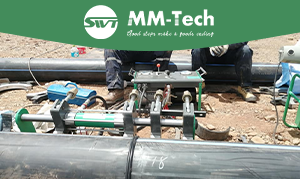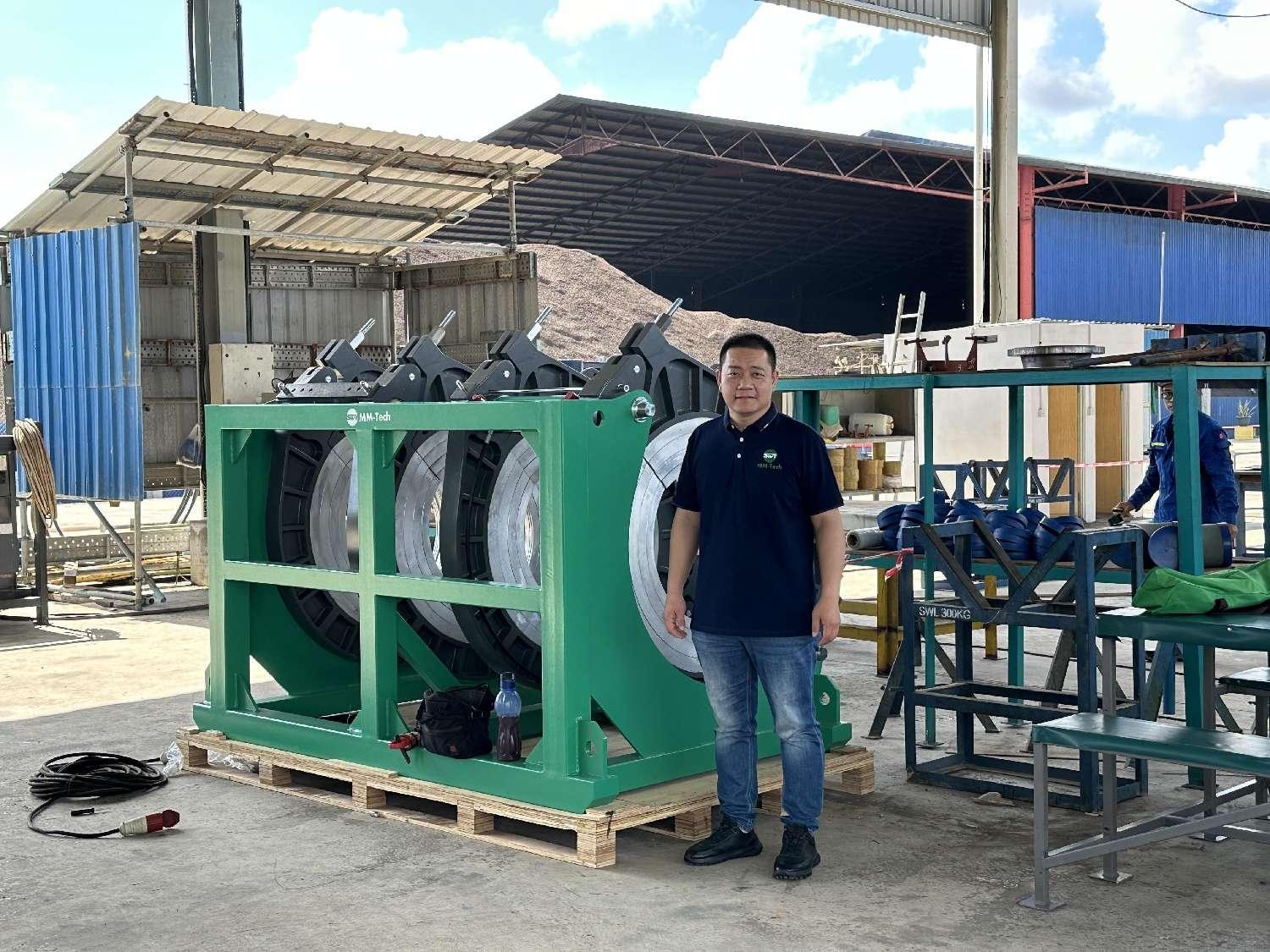Temperature uniformity plays a critical role in HDPE pipe welding. Uneven heating can weaken joints, reducing durability and performance. Maintaining consistent heat minimizes temperature differentials, ensuring strong and reliable welds. Automatic systems, like those in a butt fusion welding machine, help regulate heat within optimal ranges. MM-Tech delivers innovative solutions to meet these needs.
Key Takeaways
Keep the temperature steady between 400°F and 450°F for strong joints.
Check and clean heating plates often to avoid dirt or problems.
Do test welds to fix heat or environment issues before welding.
The Role of Temperature in Butt Fusion Welding
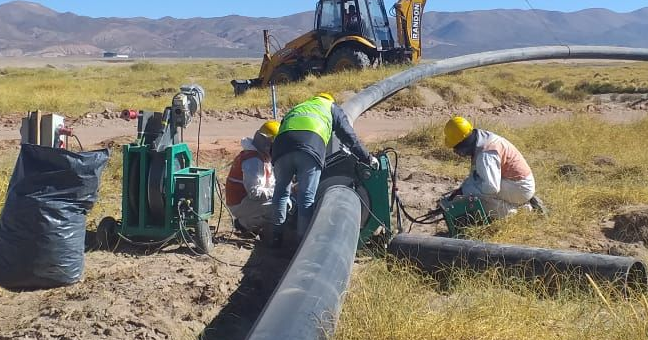
Why Temperature Uniformity Matters
Temperature plays a vital role in ensuring the structural integrity of HDPE pipe welds. Maintaining a consistent temperature between 400°F and 450°F (204°C to 232°C) is crucial during the welding process. This range allows the material to soften without degrading, creating a strong bond. If the temperature fluctuates, the weld quality suffers. For instance, overheating can weaken the pipe by reducing its pressure rating, while underheating leads to incomplete fusion. You must ensure uniform heating to achieve durable and reliable joints.
Temperature Effect | Description |
|---|---|
Increased Temperature | Reduces pressure rating of HDPE pipe, making it more susceptible to stress. |
Ideal Welding Temperature | 220°C to 260°C ensures strong fusion without compromising material integrity. |
Effects of Uneven Heating on Weld Quality
Uneven heating introduces several defects that compromise weld quality. Overheating can cause discoloration, spatter, and material damage, resulting in a weaker bond. On the other hand, underheating leads to poor adhesion, visible gaps, and incomplete fusion lines. Misalignment and joint defects often occur when heating is inconsistent. To prevent these issues, you should regularly inspect the heating plates and ensure even heat distribution. Proper temperature control is essential for creating strong and durable welds.
Common defects caused by uneven heating:
Overheating: Material damage, discoloration, and spatter.
Underheating: Weak adhesion, gaps, and incomplete fusion lines.
Inconsistent heating: Misalignment and joint defects.
How a Butt Fusion Welding Machine Ensures Consistency
Modern butt fusion welding machines are designed to maintain consistent temperature levels throughout the welding process. These machines use advanced electronic control systems to regulate heating time, temperature, and pressure with precision. By automating these parameters, the machine ensures uniform heating across the pipe surfaces. This consistency directly impacts weld quality, producing joints that can withstand high pressure and stress. Using a reliable welding machine simplifies the process and guarantees strong, defect-free welds.
Factors Influencing Temperature Uniformity
Importance of Heating Plate Condition
The condition of the heating plate directly impacts temperature uniformity during HDPE pipe welding. A clean and well-maintained heating plate ensures even heat distribution, which is essential for creating strong welds. Contaminants like dirt or residue can cause uneven heating, leading to weak joints. You should always inspect the heating plate before starting the welding process. Maintaining the ideal temperature range of 400-450°F (204-232°C) on the heating plate enhances efficiency and weld quality. Regular cleaning and proper preparation of the heating plate surface prevent defects and ensure consistent results.
Key points to remember:
Contaminated heating plates lead to uneven heating.
Clean surfaces improve heating efficiency and weld strength.
Maintain the heating plate temperature within the recommended range.
Environmental Impacts on Welding
Environmental conditions play a significant role in temperature uniformity. Extreme temperatures can affect the welding process. Low temperatures may cause the material to become brittle, increasing the risk of cracking. High temperatures can lead to improper cooling and structural weaknesses. Humidity introduces moisture, which can result in hydrogen-induced cracking. You should also consider airborne particles, as they can interfere with the welding process. Adjusting your welding parameters based on environmental factors ensures better results.
High ambient temperatures amplify heat, affecting weld performance.
Freezing conditions cause material contraction, complicating the process.
High humidity increases the risk of porosity in welds.
Variations in Pipe Material and Thickness
Different pipe materials and thicknesses require specific heating adjustments. Thicker pipes need more heat to achieve proper fusion, while thinner pipes are prone to burn-through if overheated. For example, pipes with a wall thickness greater than 6.4 mm minimize burn-through risks. You should also consider the flow rate of the medium within the pipe, as it influences heat dissipation. Understanding these variations helps you maintain consistent heating and avoid defects.
Tips for handling variations:
Use lower heat input for thinner pipes to prevent burn-through.
Ensure thicker pipes receive adequate heat for complete fusion.
Monitor heat dissipation based on pipe material and flow rate.
Calibration of the Butt Fusion Welding Machine
Proper calibration of your butt fusion welding machine is crucial for maintaining temperature uniformity. Start by ensuring the preheat temperature stays between 400 and 450°F (204-232°C). Regularly check and calibrate the heating elements to prevent productivity loss. Automatic temperature control systems help minimize temperature differentials, keeping them within ±10°F. You should also document heat input and deviations using data logging tools for quality assurance. Adjusting the machine settings based on environmental conditions further enhances performance.
Best practices for calibration:
Maintain optimal preheat temperatures.
Use automatic systems for consistent heating.
Regularly inspect and calibrate heating elements.
Document and monitor heat input for quality control.
Best Practices for Achieving Uniform Temperature
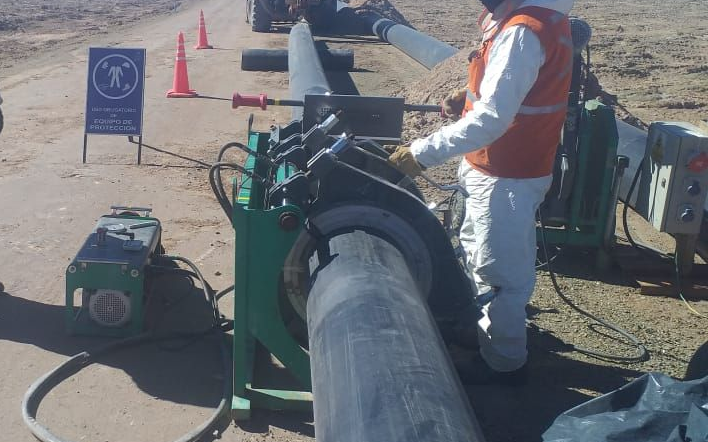
Preheating Pipes and Equipment
Preheating is essential for achieving strong and durable welds, especially when working with thicker HDPE pipes. It minimizes the risk of cracking and ensures proper fusion. You can follow these steps to preheat effectively:
Use induction heating for consistent and efficient preheating.
For pipes over 1 inch thick, ensure thorough preheating to drive out moisture and prevent hydrogen buildup.
Consider air-cooled cables for flexibility and time savings.
Preheating not only enhances weld quality but also reduces the chances of defects caused by uneven heating. This practice is particularly important in industries like petrochemicals and power generation, where weld integrity is critical.
Regular Maintenance of Heating Plates
Maintaining the heating plates of your butt fusion welding machine is vital for consistent temperature distribution. Regular checks help you identify and address potential issues before they escalate.
Clean the heating plate surface to remove dirt and residue.
Inspect the wiring to ensure proper functionality.
Perform routine maintenance to prevent safety hazards and prolong the equipment’s lifespan.
By keeping the heating plates in optimal condition, you can achieve uniform heating and improve weld strength.
Accurate Monitoring of Temperature Settings
Accurate temperature control is crucial for successful HDPE pipe welding. You can use tools like thermocouples for real-time temperature measurement or infrared sensors for non-contact monitoring. Feedback control systems are another effective option, as they adjust parameters automatically to maintain the desired temperature. Continuous monitoring solutions, such as thermal cameras, provide constant data to ensure consistent heating throughout the process.
Leveraging MM-Tech’s HDPE Pipe Butt Fusion Welding Machine
MM-Tech’s HDPE pipe butt fusion welding machine offers advanced features to enhance temperature uniformity.
Feature | Benefit |
|---|---|
Teflon-coated heating plate | Prevents sticking and ensures even heat distribution. |
Intelligent matching capabilities | Automatically configures welding data for precise results. |
Bluetooth sensor integration | Provides accurate temperature recording for better control. |
These features make MM-Tech’s machine a reliable choice for achieving consistent and high-quality welds.
Conducting Test Welds for Consistency
Test welds are a practical way to ensure temperature consistency before starting the actual welding process. They help you identify and adjust any issues with heat settings or environmental conditions.
Monitor ambient factors like humidity and temperature, as they can affect heating.
Keep consistent pressure during cooling to form a strong joint.
Regularly calibrate the heating plates to maintain even temperature distribution.
By conducting test welds, you can fine-tune your process and achieve defect-free results.
Mistakes to Avoid in HDPE Pipe Welding
Neglecting Preheating Procedures
Skipping preheating can significantly weaken the weld joint. Without proper preheating, the pipe material may not soften evenly, leading to poor adhesion and incomplete fusion lines. This can result in leaks under pressure or even joint failure. Excessive heating, on the other hand, can distort the pipe surface and cause carbonization, reducing the joint’s durability. Always preheat pipes according to the manufacturer’s guidelines to ensure a strong and reliable bond.
Tip: For thicker pipes, thorough preheating helps eliminate moisture and prevents hydrogen buildup, which can compromise weld quality.
Overlooking Environmental Conditions
Environmental factors like wind, temperature fluctuations, and humidity can disrupt the welding process. Wind can cool the heating plates unevenly, leading to inconsistent fusion. High humidity introduces moisture, increasing the risk of hydrogen-induced cracking. Extreme temperatures can make the material brittle or cause structural weaknesses in the weld. You should always monitor environmental conditions and adjust your welding parameters accordingly to maintain consistent results.
Common environmental challenges:
Wind disrupting heat distribution.
Humidity causing porosity in welds.
Temperature extremes affecting material properties.
Using Uncalibrated or Poorly Maintained Equipment
Uncalibrated equipment often leads to uneven heating, which compromises weld quality. Poorly maintained machines can cause unexpected failures, increasing downtime and operational risks. Regular calibration ensures that the heating plates distribute heat evenly, preventing defects like cold welds or overheating. Proper maintenance also extends the lifespan of your equipment and reduces costly repairs.
Note: Documenting calibration data helps you track performance and identify potential issues early.
Inconsistent Heating of Pipe Surfaces
Inconsistent heating results in defects such as weak adhesion, visible gaps, and brittle joints. Overheating can damage the pipe material, causing discoloration and deformation. Insufficient heating prevents the material from softening fully, leading to ineffective sealing and potential leaks. Regularly inspect the heating plates for alignment and even pressure to avoid these issues. Maintaining a consistent temperature range of 220-260°C ensures successful pipe welding.
Key problems caused by inconsistent heating:
Overheating: Material damage and brittle joints.
Underheating: Weak bonds and incomplete fusion lines.
Uneven heating: Misaligned joints and structural defects.
Temperature uniformity is essential for achieving strong and reliable HDPE pipe welds. Consistent heat application prevents cold welds and overheating, ensuring durable joints. Follow best practices like cleaning surfaces, applying even heat, and allowing adequate cooling time to enhance weld quality. MM-Tech’s advanced butt fusion machines simplify the process with precise temperature control and intelligent features, ensuring consistent results.
FAQ
What is the ideal temperature range for HDPE pipe welding?
The ideal range is 220°C to 260°C. This ensures proper fusion without degrading the material. Always monitor the temperature to maintain consistency. 🔥
How often should you calibrate a butt fusion welding machine?
You should calibrate it regularly, ideally before each project. This ensures accurate temperature control and prevents defects caused by uneven heating.
Can environmental conditions affect weld quality?
Yes, factors like wind, humidity, and extreme temperatures can disrupt heating. Adjust your welding parameters to counter these challenges and maintain uniformity. 🌬️


